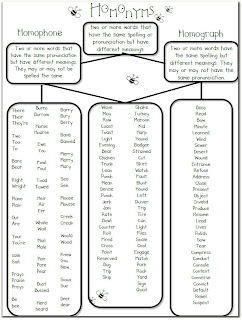Context Clues, Synonyms, Antonyms, Homographs
Common Core Standards:
L.5.5. Demonstrate understanding of figurative language, word relationships, and nuances in word meanings.
- Use the relationship between particular words (e.g., synonyms, antonyms, homographs) to better understand each of the words.
Enduring
Understanding: The relationships between words help me understand what I read
and improve my writing.
- What are synonyms, antonyms and homographs?
- How can word relationships such as synonyms and antonyms be used as context clues?
- How can I use word relationships to improve my writing?
Vocabulary:
- Synonym – two or more words with the same meaning.
- Antonym – two or more words with opposite meanings.
- Homograph – two or more words that share the same spelling (graph) mean different things and can be pronounced differently.
- Context Clues – Hints found within the text that help the reader understand tricky words or phrases.
 Synonym Antonym Homonym PDF
Synonym Antonym Homonym PDFHink Pink Game Board - Use Synonyms to Create Hink Pinks
Synonym Search Group Activity
Free Activities: Synonyms Antonyms Homographs Homophones
Free Activities: Context Clues
Context Clue Chart
Homonym Chart (Cute)
Synonym Antonym Homonym Game Board
Books:
Student Riddle Template for Eight Ate










